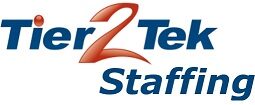G Suite Interview Questions with Answers

G Suite interview questions are essential for both hiring managers and job seekers. The ability to identify proficient candidates is crucial. Proper preparation for G Suite job opportunities is also important. Below, you’ll find technical interview questions specifically designed for G Suite. These questions help assess candidates or prepare for G Suite roles. They cover everything from basic functions to advanced Google Apps Script. This ensures a comprehensive evaluation or thorough preparation.
What is G Suite and what are its primary components?
G Suite, now known as Google Workspace, is a collection of cloud-based productivity and collaboration tools developed by Google. It includes various services like Gmail, Google Drive, Google Docs, Google Sheets, Google Slides, and Google Calendar.
Explain the difference between Google Workspace and Microsoft Office 365.
Google Workspace operates in the cloud, promoting real-time collaboration and accessibility across devices. Microsoft Office 365 supports cloud operations but offers more advanced offline access features. Many users prefer Office 365 for its extensive desktop functionalities.
How can you migrate emails from a different email provider to Google Workspace?
To migrate emails, use the data migration service in the Google Admin console. It supports various migration sources.
Describe the process to add a new user to Google Workspace.
To add a new user, access the Google Admin console and navigate to “Users.” Click “Add a User” and enter their information and email address. After setting up a password, the user account becomes active.
What are the security features available in Google Workspace?
Google Workspace offers security features like two-factor authentication, security keys, and endpoint management. It also includes data loss prevention policies and Vault for eDiscovery and data retention.
How would you recover deleted Google Workspace data?
Deleted data in Google Workspace can be recovered from the Trash within 30 days. For extended recovery, use Google Vault to set retention rules and holds, preserving data beyond standard deletion periods.
What is Google Apps Script and how is it used?
Google Apps Script is a cloud-based scripting language for light-weight application development in the Google Workspace platform. It allows automation of tasks across Google products and third-party services, enhancing functionality without needing professional software development skills.
Provide an example of a simple script that automates sending emails through Google Apps Script.
javascriptCopy codefunction sendEmail() {
var email = "example@example.com";
var subject = "Automated Email";
var body = "This is an automated email sent via Google Apps Script.";
GmailApp.sendEmail(email, subject, body);
}
Explain how Google Workspace integrates with mobile devices.
Google Workspace integrates with mobile devices via apps on Android and iOS, allowing access to mail, calendar, and tools from smartphones and tablets.
What is the purpose of Google Drive File Stream?
Google Drive File Stream is an application that allows users to access their Google Drive files directly from their computer, offering convenient access to files without using web browser and without consuming disk space on the local device.
How does Google Calendar integrate with other Google Workspace apps?
Google Calendar integrates closely with other Google Workspace apps, letting you create events from Gmail emails, attach Drive documents to events, and join Google Meet calls directly from calendar invites.
What are the primary benefits of using Google Sheets over traditional spreadsheet software?
Google Sheets supports real-time collaboration, allowing multiple users to work on the same sheet simultaneously. It also offers powerful built-in Google Apps Script automation and easy integration with other Google services.
How would you use conditional formatting in Google Sheets?
Apply conditional formatting in Google Sheets by selecting the range, going to Format → Conditional formatting, and setting rules based on text, date, or numeric values. This dynamically changes the appearance of cells based on their data.
Describe how to configure email aliases in Google Workspace.
Email aliases in Google Workspace can be configured through the Admin console by accessing Users → Select User → User information → Email aliases, and adding aliases that allow receiving emails at different addresses while keeping a single mailbox.
Explain the use of Google Groups within Google Workspace.
Google Groups within Google Workspace can serve multiple purposes like email list management, access control, and content sharing among team members, facilitating communication and collaboration across the organization.
Common Technologies Used in G Suite

G Suite, known for its collaborative and productivity-enhancing capabilities, leverages a variety of technologies to support its suite of tools. Here are some of the common technologies and features utilized in G Suite:
- Cloud Computing: G Suite runs on Google’s cloud, offering scalability, reliability, and access from anywhere.
- Google Apps Script: A JavaScript-based platform that automates and enhances G Suite app functionalities with custom scripts.
- APIs: G Suite uses APIs like Google Drive, Gmail, and Calendar to integrate and extend services in custom apps.
- Machine Learning and AI: AI and machine learning power features like smart compose, Sheets exploration, and Google Meet voice commands.
- Security Protocols: G Suite employs two-factor authentication, data encryption, and anti-phishing tools to secure user data.
- Mobile Integration: G Suite offers full mobile integration with apps available on Android and iOS for productivity on-the-go.
- Real-Time Collaboration Tools: Google Docs, Sheets, and Slides enable real-time collaboration with live edits, comments, and chat features.
Key Expertise Areas in G Suite
G Suite, now rebranded as Google Workspace, encompasses a wide array of expertise areas that are crucial for both managing and maximizing the suite’s extensive functionalities. Here are some common areas of expertise associated with G Suite:
- Administration Skills: Expertise in managing user accounts, configuring settings, and implementing security measures in the Google Admin console.
- Collaboration Facilitation: Skills in leveraging tools like Google Meet, Google Chat, and Google Drive to enhance team collaboration and communication.
- Data Management: Proficiency in using Google Sheets and Google Forms for data collection, analysis, and visualization.
- Document and Presentation Creation: Skills in using Google Docs and Google Slides to create professional-quality documents and presentations.
- Email Management: Expertise in using Gmail effectively, including organizing emails, managing labels, and configuring filters and aliases.
- Integration and Automation: Knowledge of integrating various applications with G Suite services and automating tasks using Google Apps Script.
- Project Management: Utilizing tools like Google Keep and Google Tasks to manage projects and deadlines efficiently.
- Security and Compliance: Understanding of G Suite’s security settings, compliance protocols, and best practices to protect organizational data.
Need to Hire G Suite experts?

We provide top-tier candidates proficient in G Suite technologies. Choose Tier2Tek Staffing for fast sourcing, seamless client communication, quality candidates, and innovative hiring strategies tailored to the G Suite landscape. Contact us today.
- Sourcing Speed: Quick delivery of qualified G Suite specilists.
- Communication with Clients: Constant, prioritized communication throughout the hiring process.
- Quality Candidates: We ensure candidates are thoroughly vetted for expertise and cultural fit.
- Innovative Sourcing Strategies: Advanced recruitment techniques to secure top enterprise architect talent.
